July 2010
“In England’s Green and Pleasant Land”
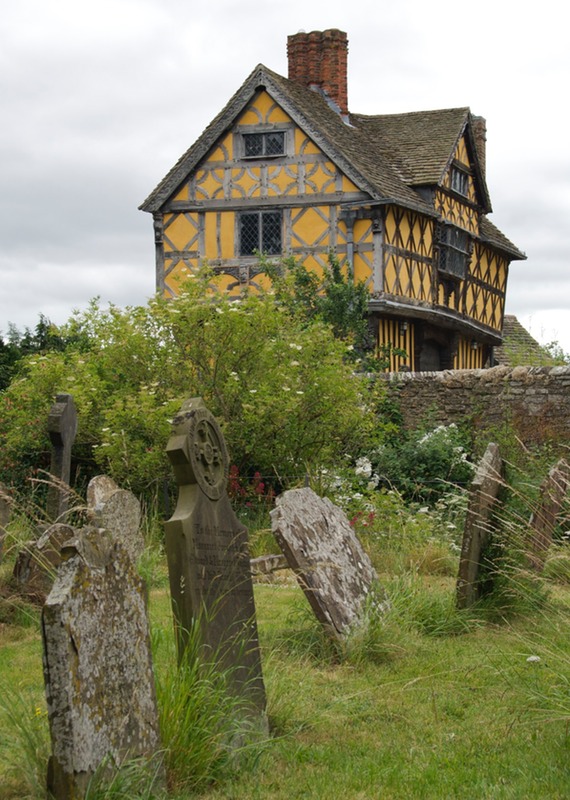
Since we last spoke, we went to Wales for a bit. And now we’re getting ready to go back again, see more of that delightful country, and then head for Ireland. We’ll tell you about all that soon. For now, we know you’re just chompin’ at the bit to hear more about what England is all about. Very close to the Welsh border, but on the English side, we stopped to have a look at Stokesay Castle near Ludlow, a very fine medieval fortified manor house. We thought it was really cool, but you have to understand that we like medieval castles almost as much as we like medieval churches. We wandered all over Stokesay, learning about Lawrence of Ludlow, who built it in the 1280’s, and the few additions made in the 1650’s; the building remains just as it was – you can see construction elements and many surviving decorative features too. We loved it, including the resident bats.
After Stokesay we checked out a few more spots in Wales and then came back to England and a visit with Rick’s cousin Des (and extended family) who lives in Codsall, near Birmingham. They threw a terrific party for us, with relatives from all around; we spent several days visiting and checking out the area and dodging raindrops. We had a delightful dinner one evening in an eating establishment along one of the canals in the area. This is a very active scene in the summertime, with lots of pretty houseboats tied up along the banks. The dinner was great, too. Despite rumors to the contrary, the English do too have good food.
The day we spent in Birmingham was very nice. In many ways it’s just another city, and mostly too modern to be interesting. But there is an excellent city museum that was built about 1900; the building itself is totally cool, intricately decorated and with the most amazing Art Deco door handles in the ladies’ loo. And we were very lucky – the museum houses an amazing collection called the Shropshire Horde; there were no crowds and we got to view all the goodies unobstructed. The horde is a large find of Celtic remains that a farmer uncovered last year; lots of jewelry and other lovely items. This is a tremendous find, and Birmingham struggled mightily in order to get permanent possession of the materials; lucky for us they were successful.
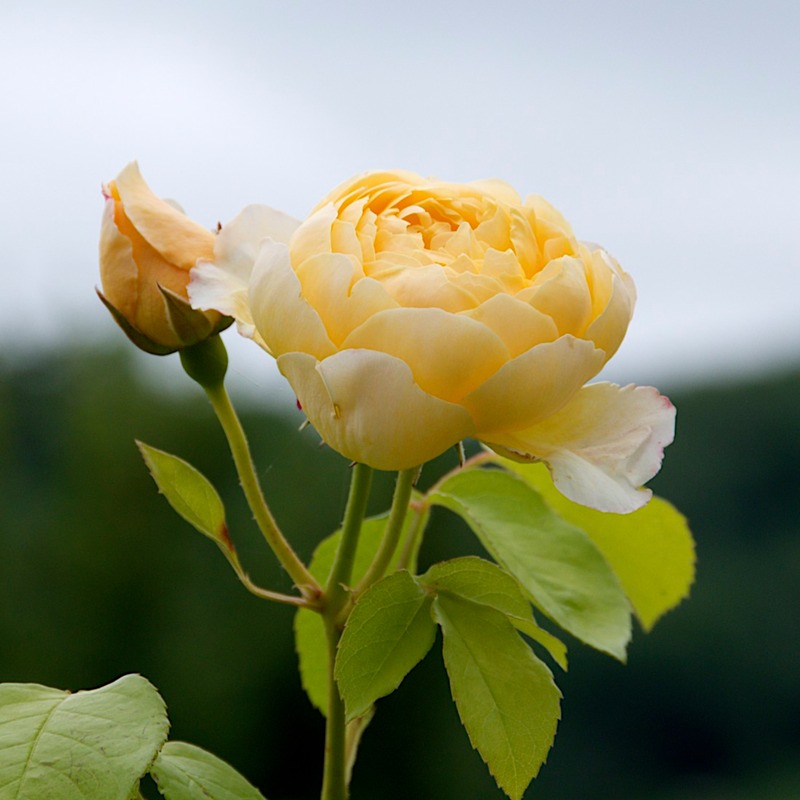
We said a temporary good-by to Des and Sue, with plans to meet again in a few weeks, and wandered off. Our first stop was to the Jaguar Museum in nearby Coventry (along with churches and castles, we also really like to see special cars). It turned out to be a bit of a disappointment, but they had some interesting odds and ends. Unlike some other manufacturers, Jaguar, which is no longer a separately owned company, does not support the museum directly. It is run by a foundation, so funding is on a smaller scale. Also, some of the most interesting cars were off being exhibited at special events around the world, apparently including the Monterey Historic Races in California. Still, it was a nice spot; go to www.motor-museums.com to enjoy some pictures.
It’s the peak of summer now; all the gardens are in full bloom, and there are gardens absolutely everywhere. Not a single open patch is without color. We recognize most of the flowers; it’s all very homey. I had always heard that the roses in England were special because of all the moisture, and it is absolutely true.
By now we had decided on a plan for seeing some of “central” England. We would make a wide loop to the east, wandering East Anglia and the East Midlands, make a quick pass through the Peak District, touch base with Des & Sue again (and a newly discovered other branch of the family), then work south a bit through the West Midlands before heading back into Wales and then to Ireland. Got all that?
Also in Coventry a couple of days later we met Des for lunch (he brought us some mail we needed that had just missed us) and he showed us the ruins of the cathedral that had been bombed to bits during WWII. It was a tragedy, of course, one that might have been avoided, but the remains have been made into a memorial against war; it’s quite evocative. You won’t want to miss it. We are finding that meeting Des for lunch is quite brilliant; we get to chat, and he always has something special to show us that’s near where we meet. And he’s a great tour guide!
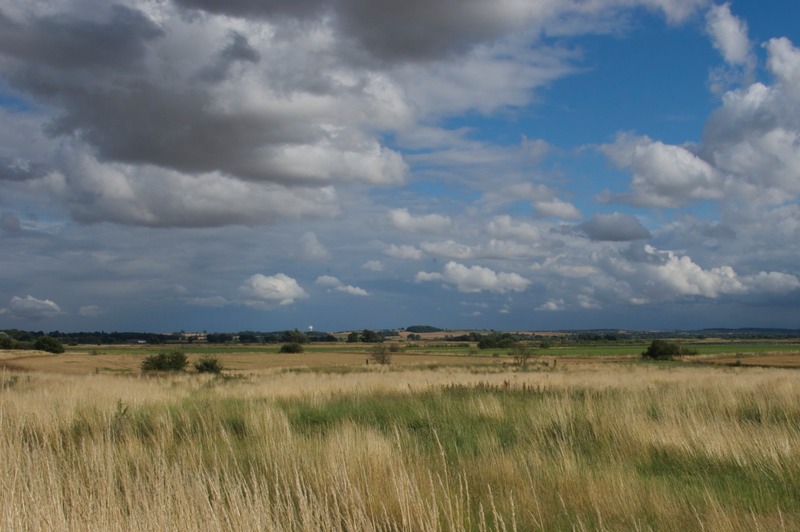
Then we headed out into the fens of East Anglia. “Flat fens” we call them because, well, that’s what they are. In general the area is quite rural, with several isolated larger cities to break up the very level landscape; this is, roughly speaking, the English equivalent of the Lowlands. The roads are kind of lumpy because the ground is all reclaimed from the ocean and tends to sink a bit. It’s quite agricultural, much drier than further west, and interesting if not spectacular. There was a lot of irrigating of fields underway, and the haying had begun early due to the dry weather this summer. We were able to spend several nights in bird sanctuaries and nature reserves, located along streams and in forested areas. That was extremely nice; the birds of England are plentiful and cheerful, and there are lots of rabbits to keep them company.
The villages in this area have great medieval churches; both are great fun to photograph. We stopped at Dedham and Stoke-by-Nayland on a Saturday; both had weddings either underway or just about to happen. Nervous brides, god-awful bridesmaid dresses, more hats than you could shake a stick at; the usual stuff. I caught a picture of the organist at one of them – in his shorts with a black robe covering what the attendees could see, and his long grey hair in ponytails. It was a hoot!
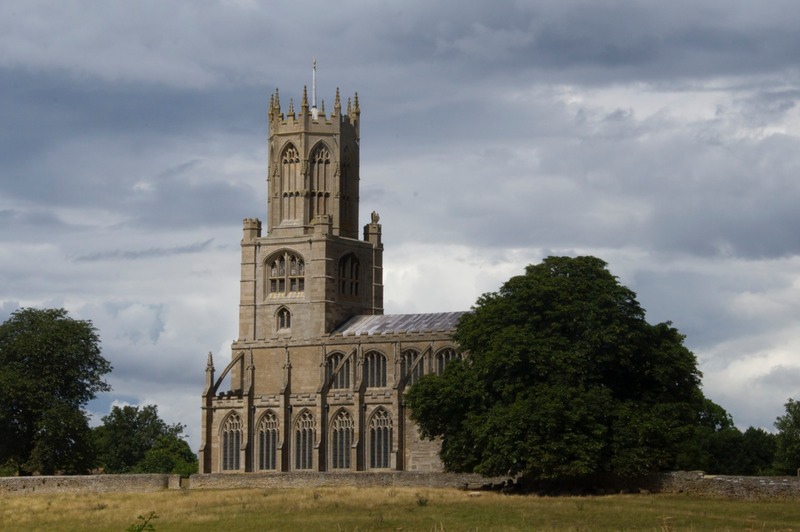
The villages had plenty of thatch-roofed cottages in them and we got to look at them up close. The thatch is in designs, sometimes quite intricate, with very fine netting over all, presumably to keep the birds from using the thatch for their nests; the cottages themselves are often Tudor-style, with half-timbering very common; lots of ivy. Quite picturesque. The villages have greens, and sometimes really strange names: we passed through both Steeple Bumpstead and Saffron Walden, we want you to know.
We spent an extremely nice day at the Duxford Imperial War Museum. Duxford was an important air base before and during World War II and many a bombing run to Germany originated there. This part of the War Museum is devoted to the war in the air, and there are many planes on exhibit, along with excellent displays. The United States gets good coverage here as well, with a building of its own filled with U.S. planes. We enjoyed it all, but particularly liked seeing the Spitfires and Hurricanes, both well represented. Duxford is still an active airfield, and there were old planes taking off and landing all day long; rides were on offer if one desired. A week or so later, Rick toured the Battle of Britain Memorial Flight facility to see and learn more about this important era. We’ve posted a few photos from each of these locations at www.motor-museums.com.
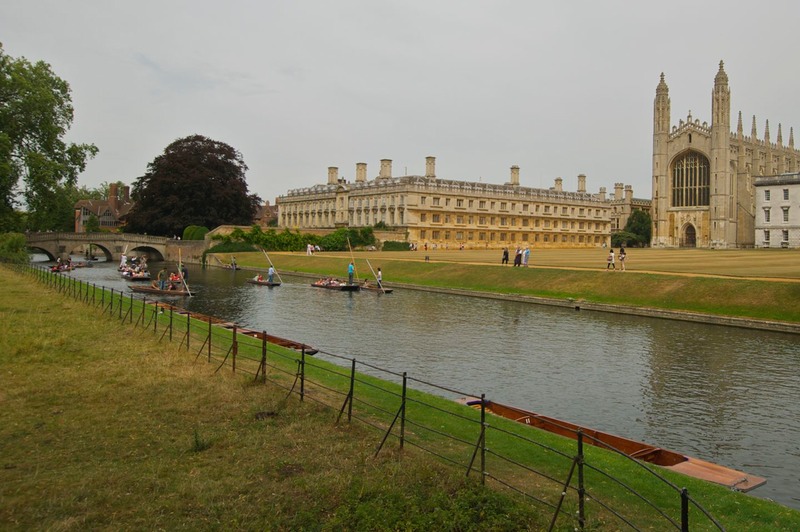
Duxford is not far from Cambridge, our next stop. We’d heard that the city was difficult to drive in, and followed a suggestion to leave the coach at the Park & Ride. It’s a cool deal; parking is free, and buses come every little while to (at a quite reasonable cost) take you to the center of town, where all the action is. Of course, as with so many parking lots in England, there was an entry barrier 2.2 meters high so we couldn’t just drive in. But there was a sign saying where to pull around to, how to find the guy to open the gate for you, etc. He walked over and let us in and showed us where to park, all with a nice smile. Not too shabby.
Cambridge is full of cool stuff, of course. The colleges are interesting, almost as interesting as watching the silly folks trying to punt their way down the Cam. We saw many of the sights, although we simply forgot to go find Christopher Wren’s library; that will require a return trip. It was quite warm, in the 80s, and there were too many people; perhaps we should plan to return on a cold Tuesday morning in February?
Ely is less than 20 miles north of Cambridge, and long anticipated by Kathy, who was hot to see the cathedral there. Very famous, it stands out for miles around, by far the tallest object in the area. The cathedral must have been quite astonishing to see when completed in the 1180s; it was one of the wonders of the medieval world. It’s still quite a sight, and one of our favorites so far.
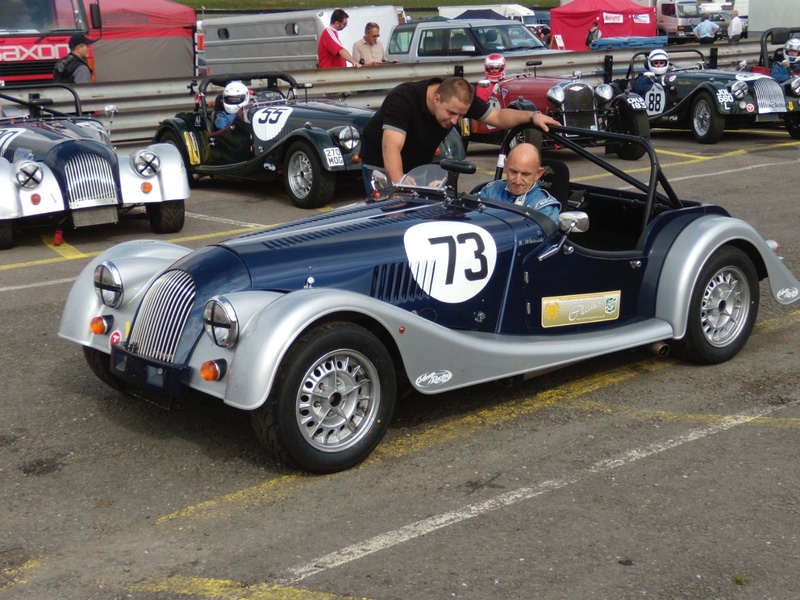
We had meant to head further east to the Norfolk coast, by way of the cathedral town of Norwich, but exotic cars intervened; we’ll have to see this area another time. Exotic cars, you say? What? Again? Yes, of course. Rick had gotten tickets for us to attend the Morgan club races at Mallory Park, near Leicester, so we headed west for the weekend. And we had a terrific couple of days there. Mallory Park is a small racetrack that’s been around for ages; lovely green countryside, simple facilities and friendly people. It was grand. The races were fun with lots of Morgans, Jaguars, Triumphs and MGs taking the track for some close and exciting racing. And, since the Morgan club was the sponsoring group, there were tons of lovely Morgans in the spectator areas as well. After chatting with the owner of a particularly pretty ivory and dark green model, Rick even got to ride around the course once; it turned out the car was doing duty as the pace car for the day. It was all a lot of fun, and we got to camp all by ourselves in a lovely grassy enclosure.
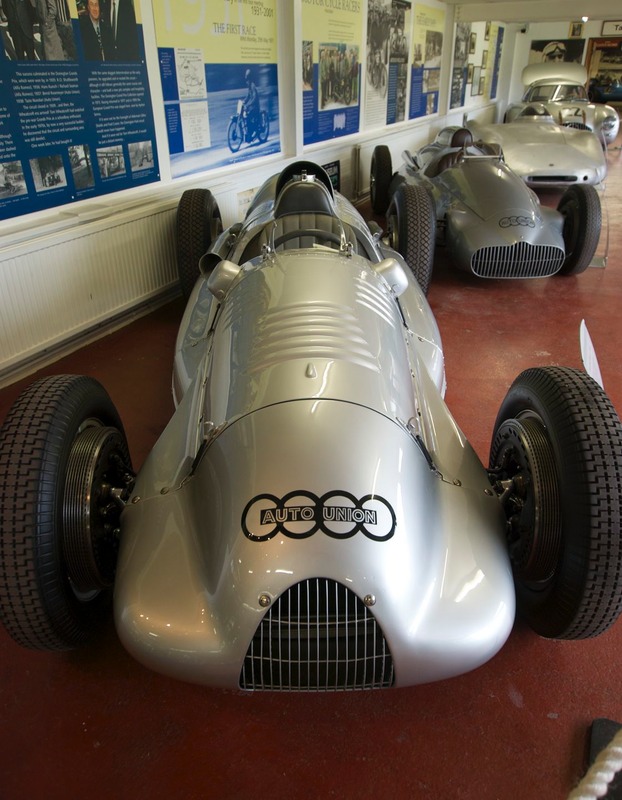
Not far from Mallory Park, we saw a sign for the Grand Prix Collection at Donnington Park Raceway; pulled over, Rick checked it out – and returned about 2 hours later, with a huge grin on his face. This turned out to be a real treat; what a collection! A bunch of Grand Prix and Formula 1 cars from the recent past back to the 30s. The emphasis was on British makes, of course, but all were represented including the star of the show – for Rick – an incredibly beautiful pair of late 30s mid-engine Auto Unions. These cars are incredibly rare and to have the chance to see them was really special. These two great racetracks so near to each other made for a memorable weekend. You can enjoy pictures of both venues at our www.motor-museums.com site.
After that adventure we went back out toward the coast, starting a new loop to the east, this time into the Midlands. Immediately we were reminded that there’s still plenty of “country” left in England. Most people visit the big cities, particularly London; we’ve spent far more time out in the open countryside, visiting smaller towns and cities; we had been concerned that all of England was developed, but it just isn’t so! Despite a large population relative to its size, and lots of traffic issues, there really is plenty of lovely open agricultural land to enjoy.
Two charming towns we stopped at, because they have interesting churches and pretty villages of the limestone common in the area, were Oundle and Fotheringhay. Oundle is quite lovely, and is home to an expansive international music festival that was underway. We couldn’t fit in a concert, but will try again next year, when we will have some advance warning. But Fotheringhay was even better. This tiny village has a lovely church, and the town is quite historic because it was where Mary Queen of Scots was beheaded. Then, a few days later, we stopped in Peterborough to see the cathedral there, and found the plaque that told how she had been transported to Peterborough in the dead of night, and buried there. (Some years later her body was transferred yet again to Westminster cathedral.) History all around us!
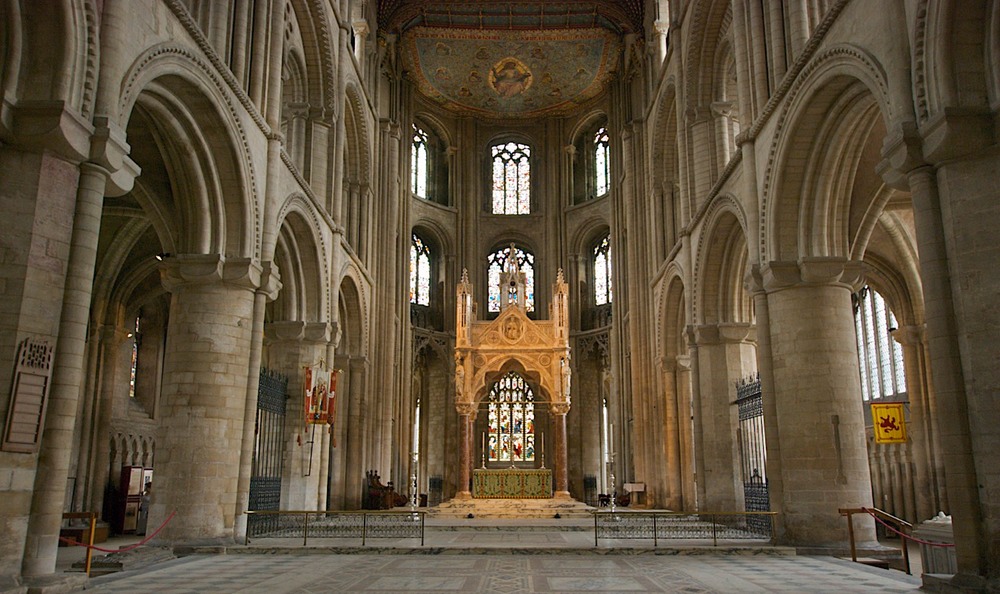
The Peterborough cathedral is quite magnificent, by the way; huge and dramatic and although Mary Queen of Scots “moved on”, Catherine of Aragon is buried there. It was really impressive and had the best presentation of historical information we’ve seen. One great display was the entire workings that had operated the clock in the cathedral tower for about 400 years. Wood framing and all the gears and mechanisms; it stood about eight feet tall and was quite impressive.
We had been hoping to get a look at one of the large manor houses we could see as we drove along, and we stopped at Burghley House near Stamford. Ultimately we decided not to go in; the description just didn’t sound special enough for the cost. But the park was open to all, and there were tame deer grazing and just waiting to be petted and fed. We had lunch, wandered the grounds, and felt quite satisfied.
We got almost to the coast, as far east as the interesting city of Boston, which has a fascinating church. Boston was the second largest harbor in England during medieval times, before the river silted up. It’s very much a working class town; the old port is on the marshes, in from the sea about five miles now. Its history is significant to Americans. It was here that, in the early 1600s, John Cotton preached to his congregation about breaking away and practicing a more pure form of Protestantism. It was from here that the Puritans set out for America. Eventually Cotton was tossed out of town and followed them, becoming an important figure in New England.
The church we visited was St. Botolph’s. Botolph was apparently a 7th century catholic monk. The town grew up around the church he founded, and originally was “Botolph’s Town” or “Botolph’s Stone”, from which the name eventually morphed into “Boston.” And of course the New England town was thusly named as well. St. Botolph’s is a worthwhile visit; there are excellent displays in the church about the Puritans, John Cotton, and the connection between the two Bostons.
Incidentally, many of the towns/cities we come across have very familiar names. It almost seems to us that nearly every city on the East Coast of the United States is named for a sister town in England.
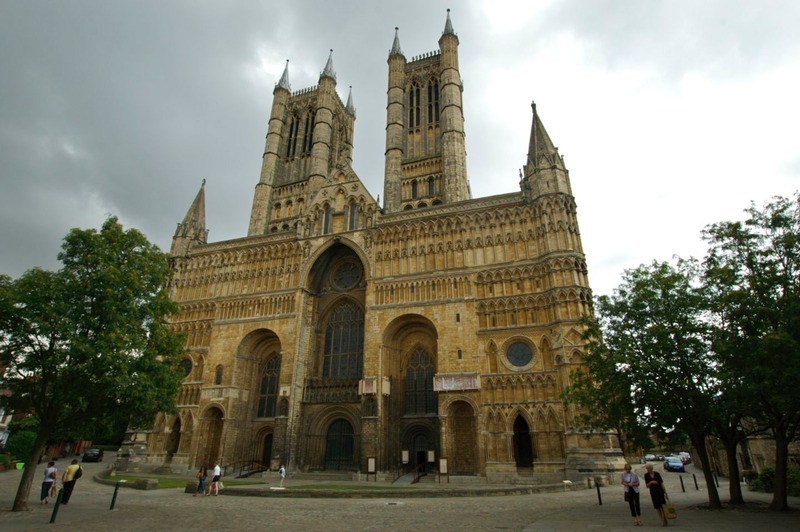
Lincoln Cathedral was our last stop on the current tour. After all the other cathedrals we had seen, we were not as impressed as others might be, but the town itself is a charmer. Lincoln has maintained its medieval core, and besides the cathedral there are both a castle and a bishop’s palace to be seen. A word here: the bishop’s palace is a site that is managed by the English Heritage organization. If you go to Britain, please consider joining this group (you get into all their sites for free). Our membership has added a lot to the pleasure of being in Britain. The sites are always beautifully maintained and very informative, with free audio tours that explain in detail what you are seeing, as well as setting you down in the proper time in history. You understand what has happened, and why the site is important. So there – my push for today.
We were still on the Fens. I wanted to see the Wolds. They were a bit further north, up the coast. What were Wolds? Well, didn’t get there, and still don’t know for sure, although we’re told that they are simply hilly spots among the flatness of the Fens. Commitments were taking us further west again. We had only a couple of days left before we were set to spend some time with a newly discovered cousin, who lives near Derby, in the Peak District. Aha! This would be our chance to see a little of that rural, parkland area. Being further west again, we found ourselves back in green countryside, with stone walls dividing the fields.
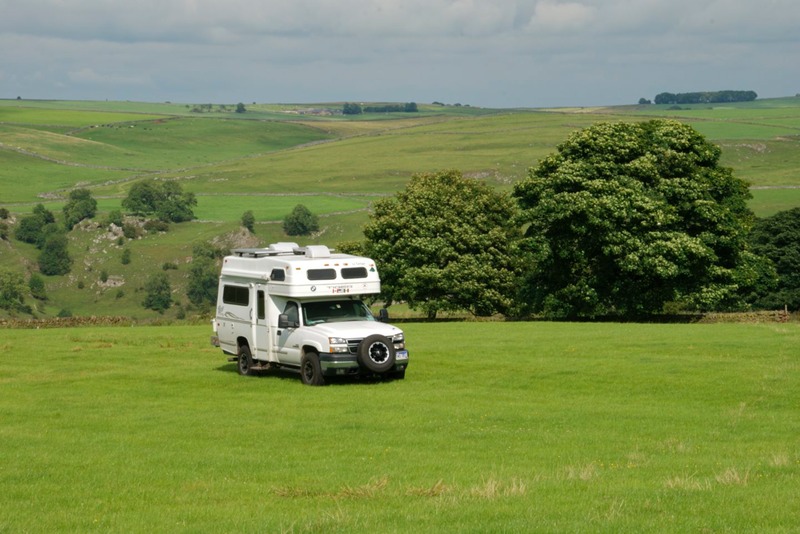
And… the Peak District is quite lovely. Much of it is a national park, and development is kept to a minimum. We drove around in the hills and checked out small towns. Some areas are touristy, with family attractions and too many ice cream parlors; but much of it is isolated and quiet. We spent two nights in a quiet, open field near the top of one of the hills, with a lovely view out over the valley and toward the peak opposite. We met the couple who owned the place, along with their dogs, cats, chickens and ducks; we loved it.
We stopped in Eyam (rhymes with “cream”) a town that was hit by the plague in the 1600s, and is famous for having simply closed itself off; no one was allowed to either enter or leave the village. Their action kept the plague from spreading, and although a large percentage of the population of the village died, much scientific study has resulted because they kept excellent records of who became ill and who did not. What courage! There is an excellent museum in Eyam, with a lot of good information on the village, and also about what the scientific community does and doesn’t know (even today) about where bubonic plague originates and how it is spread.
We had a delightful visit with newly discovered cousins in the Derby area (Daaarby, to you); fun people and we are happy to welcome them into the extended family. Debbie is Rick’s second cousin (we think this is accurate, her grandfather is Rick’s grandmother’s brother). She and husband Pete made us most welcome and we had a great time. We then dropped back down into the Birmingham area for quick hugs and more mail from Des and Sue (we also had a lovely Sunday afternoon cream tea in a vineyard nearby, and a nice introduction to Indian food as well). Des and Sue are good folks, and they’re kind enough to say they are always happy to have us around. And…Clotted cream is to die for!!
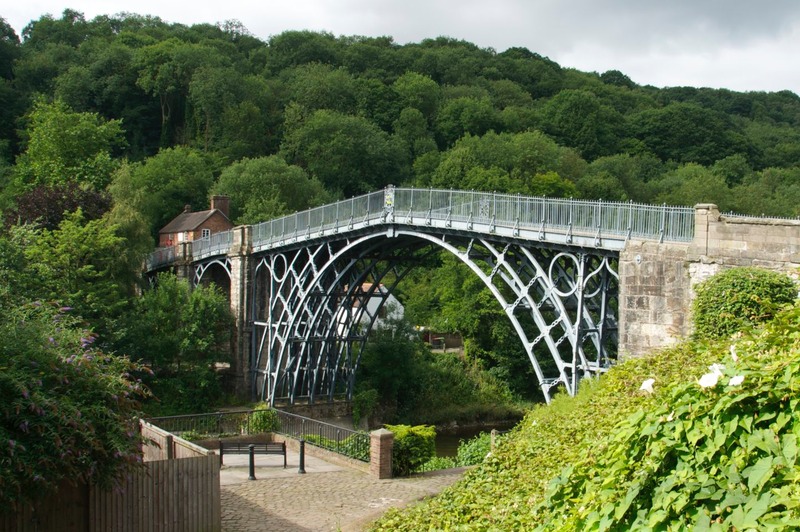
Heading west again, there were two important places we really wanted to see. The first was Ironbridge, along the Severn River. This is a town with a bridge over a gorge; construction was completed in 1781 and is considered the beginning of the industrial revolution. Today, the bridge really isn’t all that huge or amazing. But at that point, the first made of iron, it was astounding and people came from everywhere to see it – royalty, even. It’s worth a visit, and there are lots of museums in the area that talk about what the industries were at the time of the bridge, and its importance. We didn’t stay that long, but wouldn’t have wanted to miss it.
More important to us was Wroxeter Roman City, not far away. This was the fourth largest Roman city in ancient Britain; the ruins are fascinating and the information about the site is extensive. From the second to the fifth century, the city had a population of almost 5,000 people, and extended 47 blocks covering over 150 acres. The excavated area is the very center of the city and particularly shows the baths. The information presented on the construction and use of the baths and their importance as the focal point of the entire city was amazingly well done. It was a really terrific place to visit and by far our best Roman ruins site to date. It is another English Heritage site. Oh, the wall Kathy is leaning on below was constructed in 121 AD!
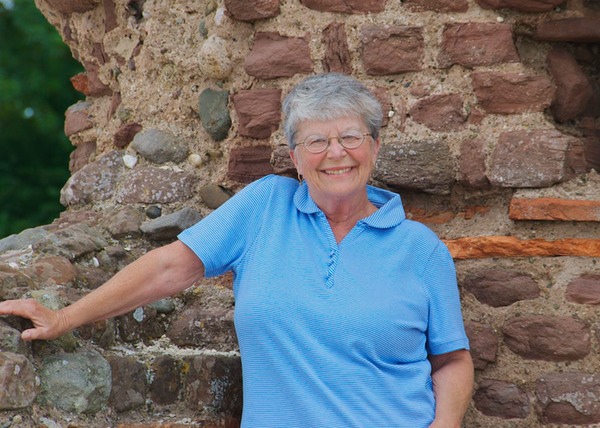
In preparing to leave England to return to Wales, we found that we had formulated some real impressions. We really like this country, although it’s a tight fit for us. We wouldn’t want to be in a vehicle any bigger than we are now, and kind of envy all those Smart cars on the road (and wonder why there aren’t more of them!). As we commented last time, all the things that make it tough on larger vehicles are the same things that contribute to the beauty and the charm of the country. We hope they never change a thing.
Our expenses are staying under control. This is despite the fact that we are covering more ground each month than we had ever thought would be necessary (about 1,500 miles per month), with the accompanying fuel costs (currently about $6.90/gallon for diesel). We simply don’t eat out very often, and tend to stay away from costly/touristy locations. While we do find Britain to be more expensive than the continent in terms of fuel and groceries, eating out seems a bit less expensive, and overall our expenses are lower than we’d anticipated; always good news. One huge factor in our favor is that the Pound is at only about $1.50 right now, compared to around $2 as recently as last year.
The English economy is suffering along with all the rest. Times are hard; one evidence of this is that pubs are having to close due to a lack of clientele. Seems like a sacrilege.

Oddities: A cattery is like a kennel – for felines. Digestives are lovely biscuits you have with your tea. A carvery is a big buffet at a restaurant or pub. The Brits talk about the British Isles as separate from “Europe”; we would call it “the continent” but they do not. English cars have license plates both front and back; the ones in front are white, the ones in back are yellow. Who knew?
We have gained a greater understanding of why English colonials a couple of hundred years ago, living in foreign countries (like India), felt so strongly about maintaining “a little bit of England” wherever they were. It must have been devastating to them to be in the middle of a desert, or a jungle, or whatever, when they had come from such a green country, one so full of trees and moisture.
And no surprise here, the term peaches and cream as used to describe one’s complexion... look no further, it came from right here.
Well, the road beckons still, and Ireland awaits us. We hope you are all well and enjoying life each and every day. Our title to this message, by the way, comes from a poem by William Blake. The poem later became a hymn, and you film-buffs may recognize it as “Jerusalem” sung by the ladies in the movie, “Calendar Girls”.
Til the next time,
Rick & Kathy, et al.
Click here to view more pictures from England.